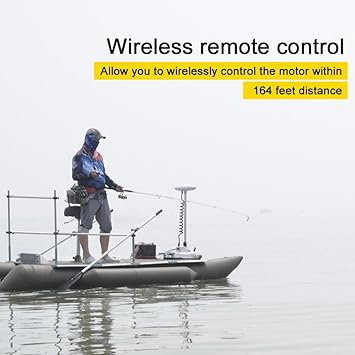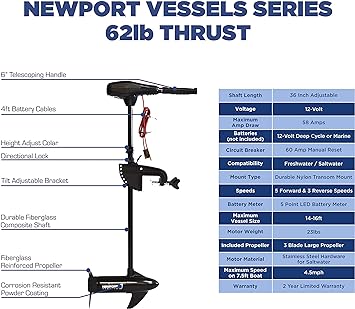Kayaking is a very popular source of entertainment. This ancient form of transport offers a euphoric release to our stressful lives.
While buying your first kayak, you must be considering a whole list of features. If you are wondering whether kayaks have a weight limit, the answer is Yes! In fact, one of the most important factors to look at while buying a kayak is its weight limit.
A kayak’s weight limit is the maximum weight it can withstand before sinking straight into the water. The weight limit is also referred to as the load limit, weight limit, maximum capacity, or weight rating. Moreover, the weight limit also determines the type of equipment and gear a kayaker can bring on their boat too.
Understanding Weight Limit of Kayaks
Different types of kayaks have different weight limits. The types of kayaks based on which the weight limit is decided namely recreational kayaks, touring kayaks, sit-on-top kayaks, and tandem kayaks.
The factors that influence the weight limit of these kayaks are the length of the hull, the width of the kayak, and water displacement volume.
If you are in search of performance, you shouldn’t try to reach the maximum weight limit of your kayak.
The general rule of thumb is to load your kayak at 50% of its maximum weight capacity. To be on the safer side, it is recommended you load a weight of 35% of the maximum weight limit of the kayak.
Recreational Kayaks
Recreational kayaks have a weight limit of 250 to 300 pounds. As the name suggests, these kayaks are meant for recreational purposes. Such kayaks are best suited or slow-moving water. Doesn’t matter whether it’s the open sea or slow-moving lakes and rivers; these kayaks can handle all of it!
Recreational kayaks aren’t made to carry a lot of weight. They can become quite dangerous if you overload them or take them for a spin in less-than-ideal conditions.
Touring Kayaks
Touring Kayaks have a weight limit of 300 to 350 pounds. Therefore, these kayaks are ideal for short trips and come with extra storage space. Moreover, you can carry extra kayaking gear as long as the total weight remains under the load limit!
Touring Kayaks are suitable for turbulent water; even with a few people on board, you will find it easy to handle these kayaks.
Sit-on-Top Kayaks
Sit-on-Top kayaks are one of the most stable types of kayaks available on the market. These kayaks can handle a maximum weight of 325 to 400 pounds. Moreover, they are wider and longer in dimensions, which improves their stability. Additionally, they are very durable and safe to ride.
Tandem Kayaks
Tandem Kayaks are some of the biggest kayaks being sold by manufacturers. These kayaks are very long, with few kayaks reaching up to 18 feet in length! Tandem kayaks can handle maximum weights of 500 to 600 pounds.
These kayaks are long and wide. Also, they can carry multiple people, making it perfect for long trips. Apart from this, you also get a whole lot of storage space. Therefore, Tandem kayaks are the right balance between weight and functionality.
How to Increase Weight Capacity of Kayak?
When choosing a kayak, its weight limit is the factor you might give the most attention to. However, you might require more equipment and gear onboard than you might have expected. Is it possible to Increase the Weight Capacity of a Kayak?
The short answer is No. You cannot increase the weight capacity of your kayak unless you modify its body structure. We don’t advise you to do that!
Instead, there are a few tricks you can employ to improve the buoyancy of your kayak. While these tips might not help you carry an extra person on board, they sure can come in handy if you wish to add a bit of extra gear to your kayak.
Paddling in the right water
Many experts advise kayaking in saltwater rather than freshwater, especially with extra weight. This is because saltwater has better buoyancy properties than freshwater. Consequently, it becomes much easier to keep a heavy kayak afloat on saltwater!
However, if you are kayaking on a river or lake, you will not find any saltwater. In such cases, paddling in calm and still, water is a good option. Not only does it reduce the amount of water that enters the kayak, but it also reduces the risk of the kayak capsizing.
Improving your Kayaking Skills
A person’s kayaking skills are important. A skilled kayaker is much better at preventing water from entering the kayak. Moreover, they can do so without any fatigue.
It is advisable to learn proper paddling techniques, especially if you are a beginner. Before treading into dangerous water, learning basic kayaking skills might be of huge help. Not only will you be able to skillfully maneuver your kayak, but you can also do so even with added weight!
Better Kayaking Gear
There are many products available that solely focus on improving the buoyancy of your kayak.
One of the most popular kayaking equipment is the floatation bag. As the name suggests, these balloon-shaped bags come with an inflation tube, which helps the kayak float. You can blow them up with air and stick them on the kayak.
Another popular kayaking gear is outriggers. This device helps in improving the stability of your kayak. Moreover, it also reduces the chances of your kayak tipping over. The added stability is useful, especially when you carry extra weight on your kayak.
You can also go for pool noodles. Made from foam, these cylindrical products are similar to floatation bags. Buoyant polyethylene is used for construction which improves the overall stability of your kayak.
Modifying your Kayak
By modifying your kayak, we do not mean tampering with the skeletal frame of the kayak. Such detailed modifications should be left to professionals. If a modification is not done correctly, it can reduce the integrity of your kayak and make it weak.
To improve the buoyancy of your kayak, you can rearrange the design of your kayak’s hull. You can decide on the type of hull based on its purpose. For example, fishermen use a pontoon-shaped hull which, because of their innovative hull design, are very stable.
A popular modification used by novice kayakers is attaching airbags near the front. In doing so, the hull floats higher than normal. Filling the airbag with helium can even prevent capsizing. If your kayak does capsize, these airbags make search and recovery much easier.





